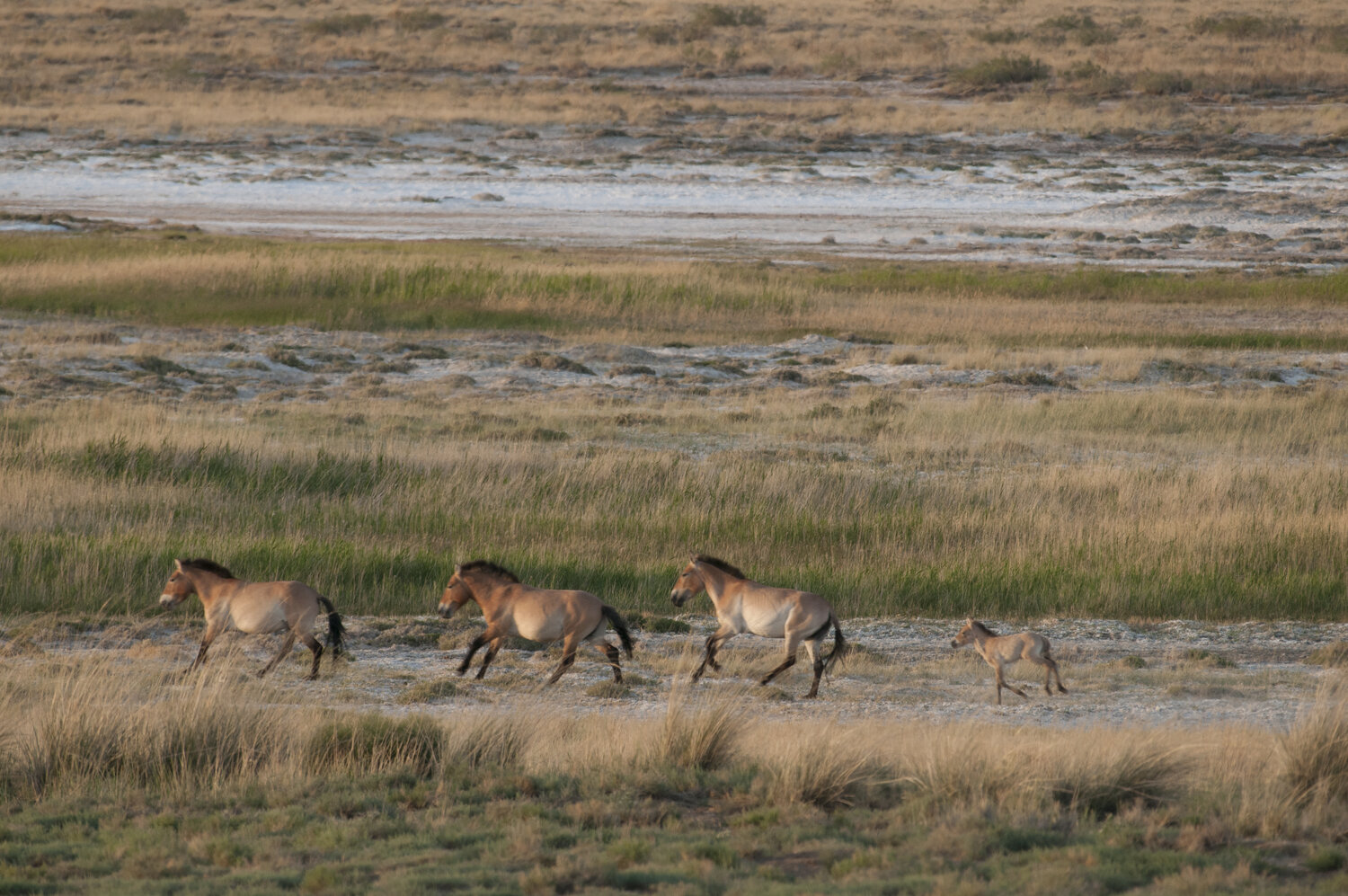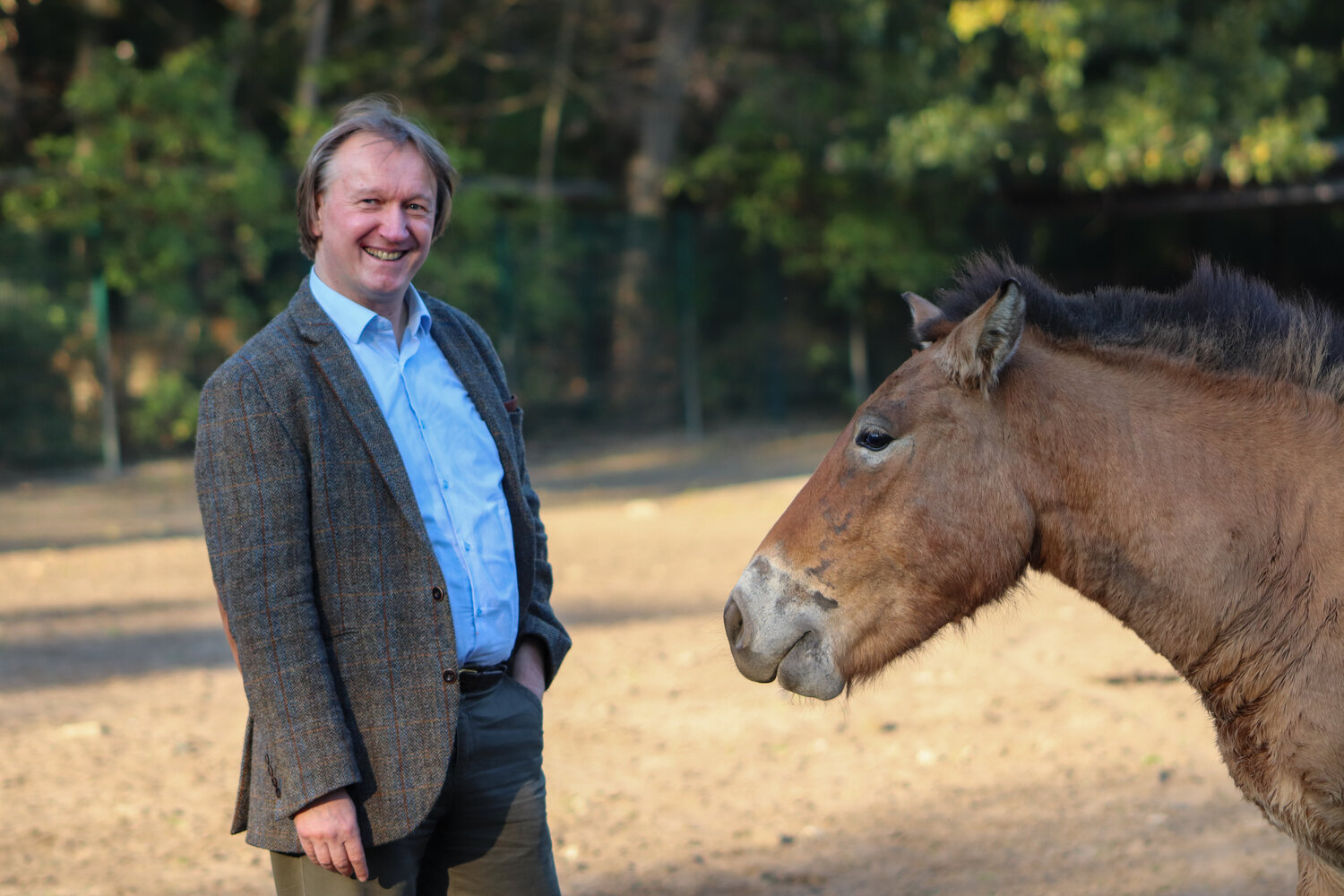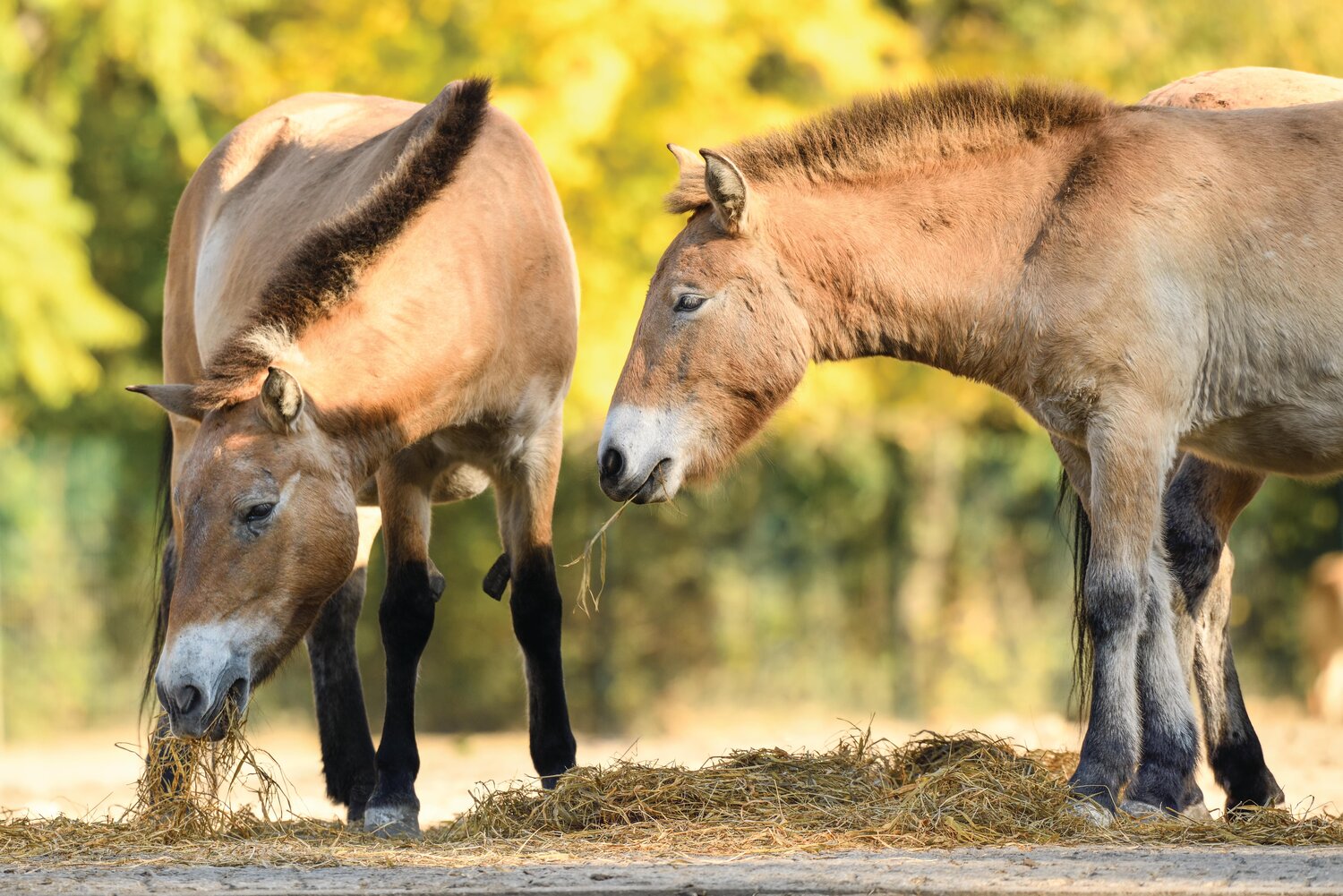The last truly wild takhi, as the Przewalski’s horse is known in its native Mongolia, was spotted in the 1960s, after which the animals almost completely disappeared off the face of the Earth. Writer Stefan Schomann went in search of the elusive horses, following them all the way across Eurasia and delving into famous travel reports and world literature classics. His quest took him to intriguingly named places such as Biidsch, Prypjat, Saissan, Baty and the Great Gobi B Strictly Protected Area, where barely any Europeans had set foot before. Schomann also writes about the Przewalski’s horses that started life here in Berlin and are now galloping wild and free across the Mongolian steppes. The author recently visited Friedrichsfelde manor house, which is close to the Przewalski’s habitat at the Tierpark, to present his book Auf der Suche nach den wilden Pferden (“In search of wild horses”), published by Galiani Berlin.
These beautiful animals, once extinct in the wild, have returned to their natural habitats thanks to concerted breeding and reintroduction projects – some of which have involved Tierpark Berlin. In 2008 the IUCN was able to change the horse’s Red List status from “Extinct in the Wild” to “Critically Endangered”, then simply to “Endangered” in 2011.
Betting on the right horse
Since 1985, Tierpark Berlin has provided 17 of its own Przewalski’s wild horses for reintroduction and breeding projects in China and Mongolia. In the meantime, the Gobi B wild horse population has increased to 352. A total of 75 foals have been born in the last twelve months alone – a great success story! “We now have around 850 wild horses living in various conservation areas in Mongolia, so we can stop reintroducing zoo-bred individuals there for now,” says Tierpark curator Dr Florian Sicks. “However, researchers are looking into other areas of Central Asia to see if reintroduction projects might make sense in those regions.” Despite the success of conservation efforts so far, there is still much to be done before the Przewalski’s horse can be considered safe. At around 1,000 individuals, the total wild population is still relatively small – and considerably less than the number that used to roam these plains. “Without the scientifically coordinated conservation efforts of zoological facilities, there would be no wild horses living in China and Mongolia today,” stresses Zoo and Tierpark Director Dr Andreas Knieriem. “From 1969 onward Przewalski’s horses were considered extinct in the wild. It is only thanks to expertise, determination, and plenty of patience that the horses can now be seen roaming wild in their native habitats once more. The reintroduction of the Przewalski’s horse is one of the most successful species conservation efforts ever coordinated by zoos.”


